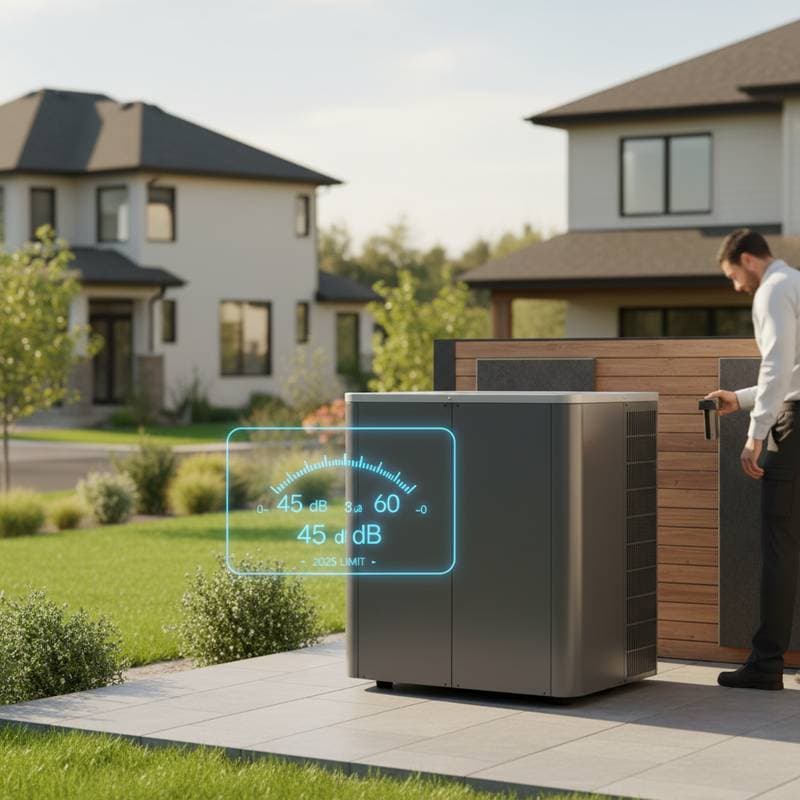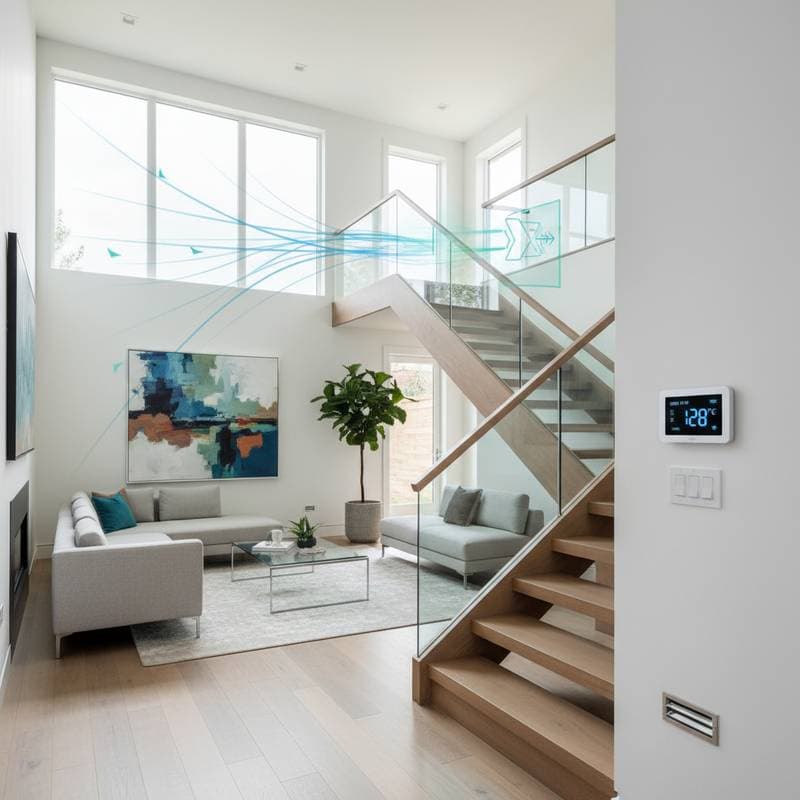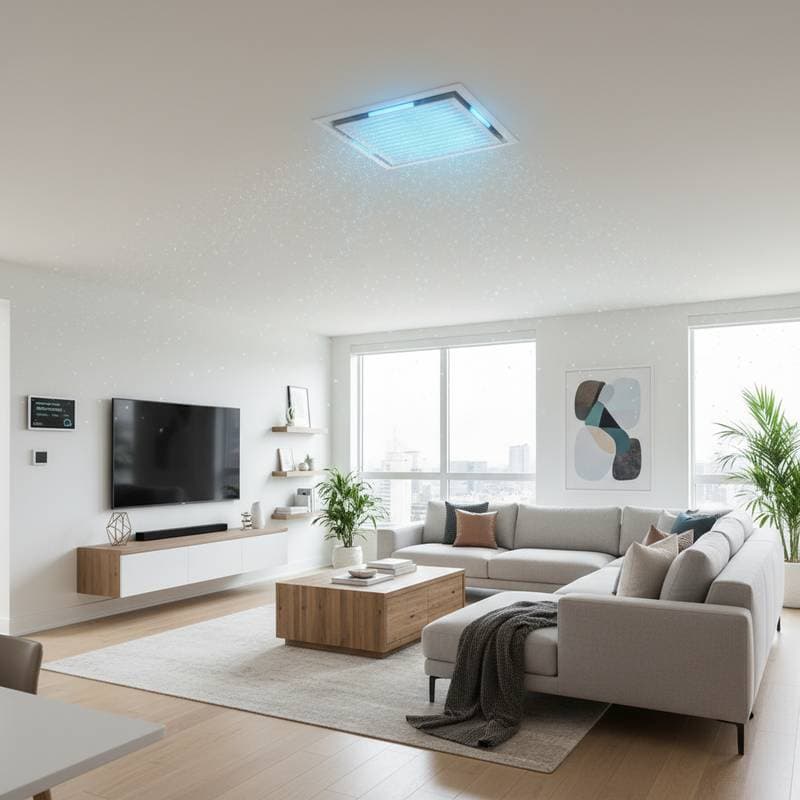Achieve 35% Energy Savings in Multi-Story Homes Through Zoning
Temperature disparities between floors create discomfort and drive up energy costs. HVAC zoning addresses this issue by segmenting your home into distinct areas for targeted climate control, yielding savings of up to 35%. This overview details the system's operation, pricing structure, and rationale for its value in multi-story properties.
| Item | Key Details |
|---|---|
| Average Energy Savings | Up to 35% |
| Typical Installation Cost | $2,000 - $4,500 |
| Ideal Home Type | Multi-story or expansive single-family homes |
| Main Benefit | Tailored comfort and minimized energy loss |
| System Lifespan | 15 - 20 years with routine upkeep |
Breaking Down HVAC Zoning Costs
Pricing for zoning systems fluctuates based on zone count, equipment selection, and setup intricacy. Homeowners generally invest between $2,000 and $4,500 for a full professional setup.
Costs Based on Home Size
| Home Size | Estimated Cost |
|---|---|
| Small home (under 2,000 sq. ft.) | $1,500 - $2,500 |
| Medium home (2,000 - 3,000 sq. ft.) | $2,500 - $3,500 |
| Large home (over 3,000 sq. ft.) | $3,500 - $5,000+ |
Retrofitting an existing HVAC setup may elevate expenses if duct alterations prove necessary. However, the resulting energy reductions frequently recoup the outlay in just a few years.
Elements Influencing Zoning Installation Expenses
Multiple components determine the overall expense of adding zoning to a two-story home.
Zone Quantity
Every zone demands its dedicated thermostat and damper mechanism. Additional zones elevate both material and installation fees. Two-story homes typically thrive with two to four zones, for instance, one per level alongside a dedicated area for the primary sleeping quarters.
Current HVAC Infrastructure
Contemporary variable-speed units integrate zoning with relative ease. Legacy systems could require enhanced controllers or dampers to accommodate the increased demands.
Duct Configuration
Accessible duct paths streamline the process and contain costs. Pathways in confined attics or enclosed walls extend labor duration and expenses.
Thermostat Selection
Wireless smart models that sync with zoning components increase initial spending yet promote superior efficiency over time. These devices adapt to occupancy patterns and optimize settings autonomously.
Installation Labor and Regional Variations
Expert setup remains crucial for optimal air distribution. Labor often comprises 40% to 50% of the project total, with hourly rates differing by local HVAC economics.
HVAC Zoning System Varieties
Diverse zoning approaches suit varying home architectures and comfort objectives.
1. Traditional Ducted Zoning
Motorized dampers within current ducts route airflow to required areas. This option suits residences equipped with central heating and cooling.
Pros:
- Compatible with prevailing HVAC configurations
- Delivers uniform temperatures over various levels
- Curbs energy loss through exact airflow management
Cons:
- Necessitates duct adjustments
- Involves moderately elevated startup costs
2. Ductless Mini-Split Zoning
Independent indoor units enable isolated temperature regulation per room or section.
Pros:
- Suited for duct-free properties
- Highly efficient in operation
- Straightforward expansion to extensions or lower levels
Cons:
- Indoor components remain visible
- Greater preliminary equipment investment
3. Hybrid Zoning Approaches
These merge ducted and ductless elements for enhanced adaptability, common in spacious or aged structures with irregular designs.
Pros:
- Adaptable to intricate layouts
- Supports phased implementation
Cons:
- Demands precise engineering and specialist input
Indicators That Your Home Requires Zoning
Certain scenarios signal zoning as a viable solution.
- Pronounced temperature variations across levels
- Persistent hot or cold areas distant from the central thermostat
- Elevated utility statements despite reasonable settings
- Frequent adjustments by household members
- Unnecessary conditioning of seldom-occupied spaces
Such imbalances, like a sweltering upper level against a cool lower one, underscore the need for zoning to equalize conditions.
Steps in the HVAC Zoning Setup Process
Understanding the sequence prepares you for a seamless experience.
-
Preliminary Evaluation
Technicians review your existing HVAC, ducts, and air currents to formulate a zoning strategy. -
Planning Phase
The residence divides into zones considering structure, daily use, and light exposure. Thermostat placements ensure precise readings. -
Damper Integration
Automated dampers fit into ducts or link to handlers in ductless variants, regulating flow as needed. -
Electrical and Control Configuration
Zones connect via thermostats to a master panel interfacing with the HVAC core. -
Verification and Calibration
Specialists verify functionality across zones, fine-tuning for uniform performance. -
User Guidance Session
Instructions cover system management, scheduling, and sustaining equilibrium.
Breakdown of Labor Expenses for Zoning
Workforce efforts constitute roughly half the installation budget. Hourly rates for certified professionals span $75 to $150, influenced by location and duct challenges.
Basic two-zone projects span one to two days. Elaborate configurations with multiple zones or restricted access prolong timelines. Selecting qualified contractors safeguards against future complications in air balance or controls.
Common Queries on HVAC Zoning
What Energy Reductions Occur in Multi-Story Homes?
Savings reach 35% on heating and cooling expenses for many. Actual figures hinge on property dimensions, insulation efficacy, and zone utilization strategies.
Is Retrofitting Possible for Current Systems?
Yes, central units generally accept damper additions and thermostat upgrades. An inspection verifies duct and component suitability.
Do Multiple Units Become Necessary?
Not typically. Dampers and intelligent controls enable one system to manage various zones. Expansive properties may warrant supplementary units for peak efficiency.
Does Zoning Prolong Equipment Durability?
Indeed. Lessened full-load operation eases component stress, frequently boosting longevity and curbing upkeep needs.
Remote Zone Management Options?
Yes. Contemporary setups integrate Wi-Fi thermostats for adjustments via mobile devices from any location.
Value for Compact Residences?
Smaller homes gain advantages where room variances exist or underused areas prevail. Comfort gains and efficiencies often validate the expenditure.
Steps to Implement Zoning for Enhanced Home Efficiency
Evaluate your current setup against zoning benefits to determine readiness. Consult local experts for a tailored assessment, ensuring alignment with your comfort and budget goals. This upgrade not only balances temperatures but also secures lasting financial and environmental advantages.





